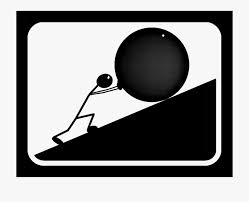Maximize Profits: 15 Proven Strategies to Minimize Business Expenses
Profit maximization is paramount for any business owner or entrepreneur. Effective financial management, specifically minimizing unnecessary expenses, is the cornerstone of achieving this goal. This comprehensive guide delves into fifteen practical strategies to significantly reduce costs and boost your bottom line. Let's explore how to optimize your business finances for sustainable growth.
1. Budgeting: The Foundation of Financial Control
A detailed budget is your financial roadmap. It provides a clear picture of your income and expenditures, enabling you to pinpoint areas ripe for cost reduction. Categorize expenses meticulously, separating essential from non-essential spending. This granular analysis forms the basis of informed decision-making.
2. Expense Analysis: Identifying Areas for Improvement
Scrutinize each expense category. Identify non-essential costs – those not directly contributing to core business functions or revenue generation. Determine which can be eliminated or significantly reduced without compromising operational effectiveness. This critical assessment will reveal hidden savings.
3. Negotiate with Suppliers: Leverage Your Buying Power
Don't accept the first price offered. Negotiate with suppliers for better rates, bulk discounts, or more favorable payment terms. Building strong, mutually beneficial relationships can yield substantial cost savings over the long term. Remember, collaboration can be key to securing better deals.
4. Embrace Technology: Streamlining Operations for Efficiency
Technology empowers cost reduction. Explore digital platforms, automation tools, and software solutions designed to streamline workflows. These technologies can significantly reduce manual labor, improve productivity, and minimize operational expenses. The initial investment often pays for itself many times over.
5. Strategic Outsourcing: Focus on Core Competencies
Outsourcing non-core functions like accounting, IT support, or marketing to specialized providers can be a cost-effective strategy. It allows you to concentrate on your core business activities, maximizing your time and resources on what drives revenue and growth. Carefully evaluate providers based on cost, quality, and reliability.
6. Sustainable Practices: Go Green and Save Green
Implementing environmentally friendly practices offers significant cost-saving opportunities. Energy-efficient appliances, renewable energy sources, and paperless operations all contribute to lower utility bills and a smaller carbon footprint. This is a win-win for your business and the environment.
7. Marketing ROI: Optimizing Your Marketing Spend
Analyze your marketing campaigns meticulously. Identify which channels are delivering the highest return on investment (ROI). Focus your resources on high-performing strategies and eliminate or reduce spending on underperforming avenues. Data-driven decisions are crucial here.
8. Inventory Optimization: Managing Stock Effectively
Efficient inventory management prevents both overstocking (leading to storage costs and potential waste) and understocking (resulting in lost sales). Analyze sales data and demand patterns to optimize inventory levels. Accurate forecasting is key to minimizing holding costs.
9. Cash Flow Management: Monitoring for Leaks and Inefficiencies
Maintain a close watch on your cash flow. Identify and address any potential leaks, such as late payments, unnecessary subscriptions, or excessive credit card fees. Regularly review your financial statements to ensure healthy cash flow and financial stability.
10. Social Media Marketing: Cost-Effective Brand Building
Harness the power of social media for cost-effective marketing. Platforms like Facebook, Instagram, and Twitter provide access to a vast audience at minimal cost compared to traditional advertising. Develop a strong social media presence to increase brand awareness and drive sales.
11. Employee Engagement: Fostering a Cost-Conscious Culture
Engage your employees in cost-cutting initiatives. Encourage suggestions and offer incentives for innovative ideas that reduce waste or find more cost-effective solutions. This fosters a culture of efficiency and shared responsibility.
12. Operational Streamlining: Eliminating Redundancies and Inefficiencies
Identify and eliminate redundancies and inefficiencies in your business processes. Streamline workflows, automate repetitive tasks, and improve overall productivity. Process optimization is a critical element of long-term cost reduction.
13. Insurance Policy Review: Securing Optimal Coverage
Regularly review your insurance policies to ensure you have adequate coverage at competitive rates. Shop around for better quotes and consider bundling policies to achieve cost savings without compromising protection.
14. Invest in Employee Development: Enhancing Productivity and Efficiency
Investing in employee training and development is a long-term strategy for maximizing profitability. Well-trained employees are more productive, make fewer costly mistakes, and contribute to a more efficient and profitable organization.
15. Seek Professional Guidance: Expert Financial Advice
Consider seeking professional financial advice from accountants, financial advisors, or business consultants. Their expertise can provide tailored guidance to meet your specific business needs and optimize your financial strategies.
By implementing these strategies, you can significantly minimize expenses and maximize profits. Remember, every dollar saved directly contributes to your bottom line. Start implementing these cost-saving measures today and reap the rewards of improved financial health.
What cost-cutting strategies have you successfully implemented? Share your experiences in the comments below!
Your Opinion: Is minimizing expenses crucial for the long-term success of any business?
```




